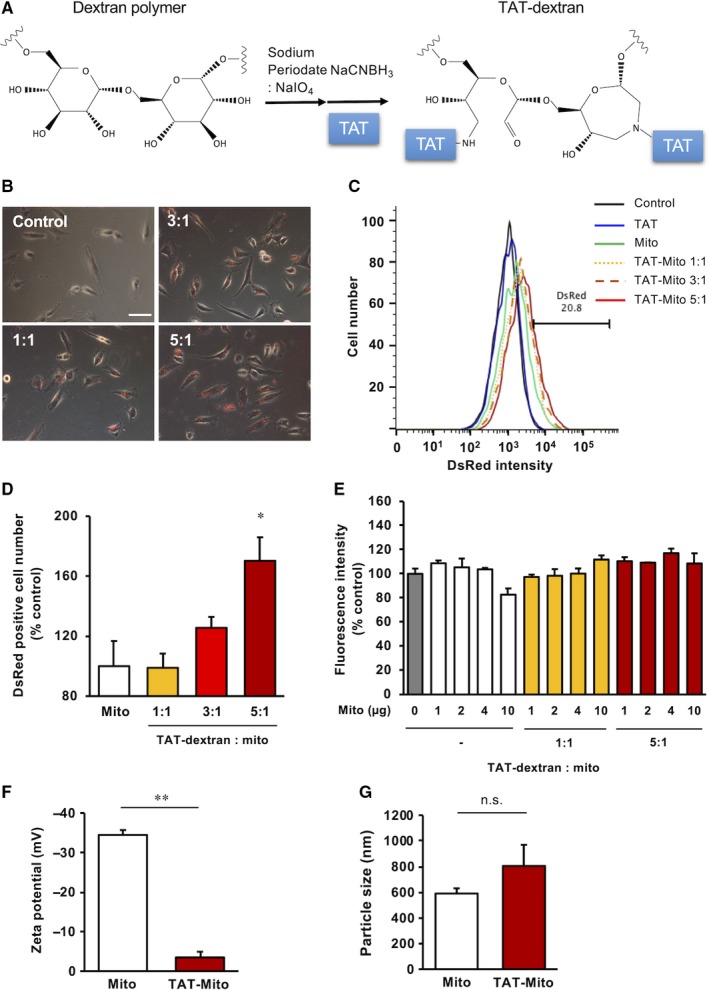Figure 1.

Optimization of TAT‐dextran for mitochondrial transfer. (Recipient cells, EMCs; Mitochondrial donor cells, H9c2 cells). A, Schematic showing the reaction mechanism of TAT‐dextran formation. B, Phase‐contrast microscopy images of EMCs at 24 h after DsRed‐Mito transfer. Ratio indicates TAT‐dextran and mitochondrial concentrations (µg/mL). The white bar indicates 100 µm. C, Evaluation of mitochondrial uptake by EMCs based on DsRed intensity by flow cytometry. D, Graph representing rate of DsRed‐positive EMCs. Error bars indicate standard error (SE) (n = 3). * indicates significant changes compared to mitochondria transfer group (P < .05). E, Cytotoxicity analysis of TAT‐dextran with EMCs using MTT assay. Error bars indicate SE (n = 3). F, Zeta potential of isolated mitochondria from H9c2 cells (n = 3). ** indicates significant changes between TAT‐dextran–modified mitochondria and mitochondria without TAT‐dextran modification (P < .01). G, Sizes of isolated mitochondria from H9c2 cells (n = 3). n.s. indicates no significant changes
